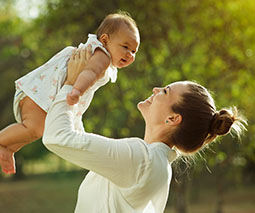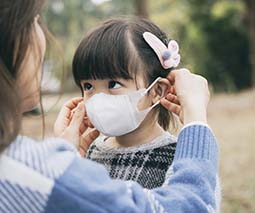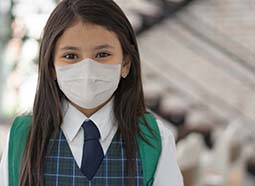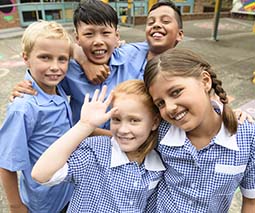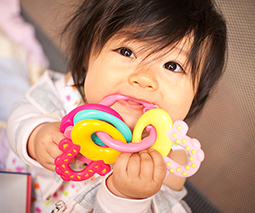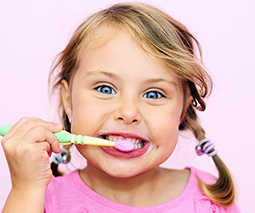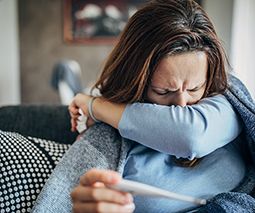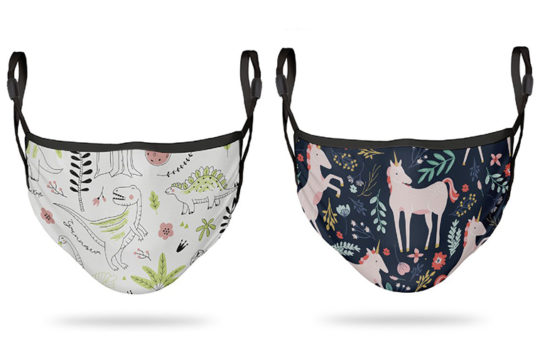Face masks and children: When and why should kids wear masks too?
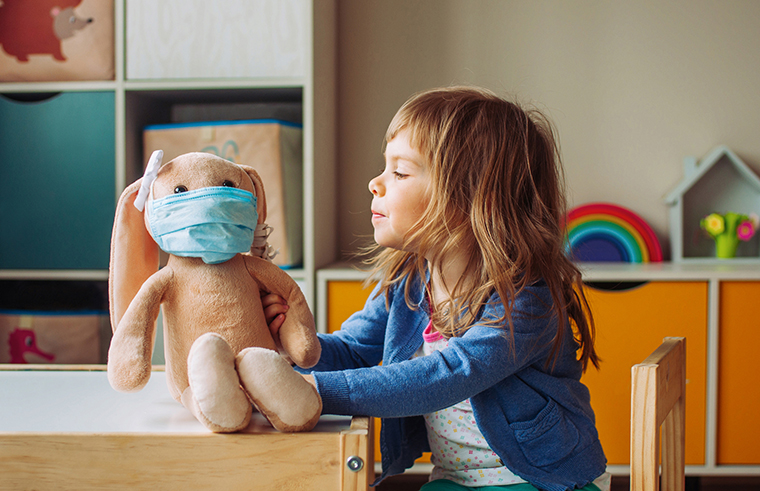
As we all know, it is mandatory to wear masks in Melbourne at the moment. On top of that, in Sydney, the Premier has strongly advised people to start wearing masks when they go shopping, are on public transport or in crowded areas.
But does this also apply to children? The government has said that children under 12 don’t need to wear masks, and Margie Danchin, a paediatrician at the Royal Children’s Hospital in Melbourne, explains why.
The magic age of 12
The first thing to know is that there is no particular medical reason why children under 12 are exempt from wearing face masks.
“In terms of this age cut-off of 12 years, it’s really a primary-secondary school cut-off. It was just easiest to say, okay, in the community, primary school age children don’t have to wear masks. It’s not compulsory, whereas in high school, they do,” Margie says. “But, for example, at the Royal Children’s Hospital where I work, we require children only under the age of five not to wear masks. So there are different recommendations around this.”
Listen to Margie Danchin on Feed Play Love:
Choose face masks wisely
One of the reasons that young children are exempt from wearing masks is the simple fact that it can be really challenging for parents to enforce this rule. But it can be made a little easier if you choose a face mask that fits your child well and is comfortable to wear.
“There are obviously lots of lovely patterns and more appealing masks so that they’re a little less frightening for children. Not making them too heavy, so that they are light, and [ensuring] that the straps fit nicely over the ears and are not too tight, so that it fits nicely onto the face. There are different sizes; the masks for children are a lot smaller,” Margie advises.
There does have to be some thought if your child is going to wear a mask – is it comfortable and will they tolerate it on their face? Because we all know that it doesn’t feel very nice to have a mask on all the time – especially if it’s very thick or hot.
How much risk are young children really at of getting COVID-19?
In a nutshell, the risk is low – young children are not the main drivers of community transmission, which is part of why the debate on whether schools should be kept open or closed can be so tricky to answer.
“What we do know is that clinical disease in children from coronavirus is very mild for the most part, which is good. And we’re seeing that playing out over and over again, even for adults. The majority of coronavirus illness, to be honest, is mild. But as we know, the older you get, or if you have any chronic medical conditions, the more likely you are to get sick,” Margie explains.
“Studies and evidence show that transmission between children is quite low, and that they’re not the main drivers of community transmission, unlike with influenza and a lot of other viruses. So getting back to our decision around why children under 12 … it’s the understanding that younger children are less likely to transmit coronavirus, as well as being less likely to tolerate wearing a mask.”
When should children NOT wear masks?
While some children under the age of 12 are happy to wear a mask safely, Safer Care Victoria has made the recommendation that children under the age of two should not wear masks because there is a risk of strangulation if the mask was to get tangled, or moved around the neck and it wasn’t noticed.
A mask put on a young baby poses additional risks – if they vomit, have a colour change, or become unwell, the mask could obscure all the signs that they are in distress and need urgent assistance.
So kids don’t need masks – but what about when they’re around at-risk adults?
While children may be at low risk of contracting and transmitting the disease, it is worth remembering that ‘low risk’ is not the same as ‘no risk’, and there are some situations where taking extra care is warranted, particularly if your germy little toddler is showing signs of illness.
Margie explains that families must take extra care when there are older adults – grandparents, for instance – or adults with medical conditions, living in the household.
“Really, the most important thing is that if the child has respiratory symptoms, you’ve got to show extreme caution, they really do need to stay away because we know that the virus is transmitted in respiratory droplets.”
“I’m certainly aware of some households where the person who’s at higher risk has colour-coded utensils and plates and cups; that they use with a little yellow tag, if you like. And the rest of the family uses the green tag, cutlery and crockery. That’s obviously an extreme example,” Margie says. “But if you are living in a household where someone is at higher risk, you do have to be very careful, especially if you’ve got any respiratory symptoms. And what I mean by that is, a runny nose, a sore throat or fever … those sorts of things.”
Face masks made for kids
If you are considering buying face masks for your children, be sure to invest in masks that are adjustable to ensure a good, snug fit against your child’s face. Look for masks that are washable and have three layers. These lovely face masks from Bundarra also come with activated carbon filters that can be inserted into the mask for additional protection.
